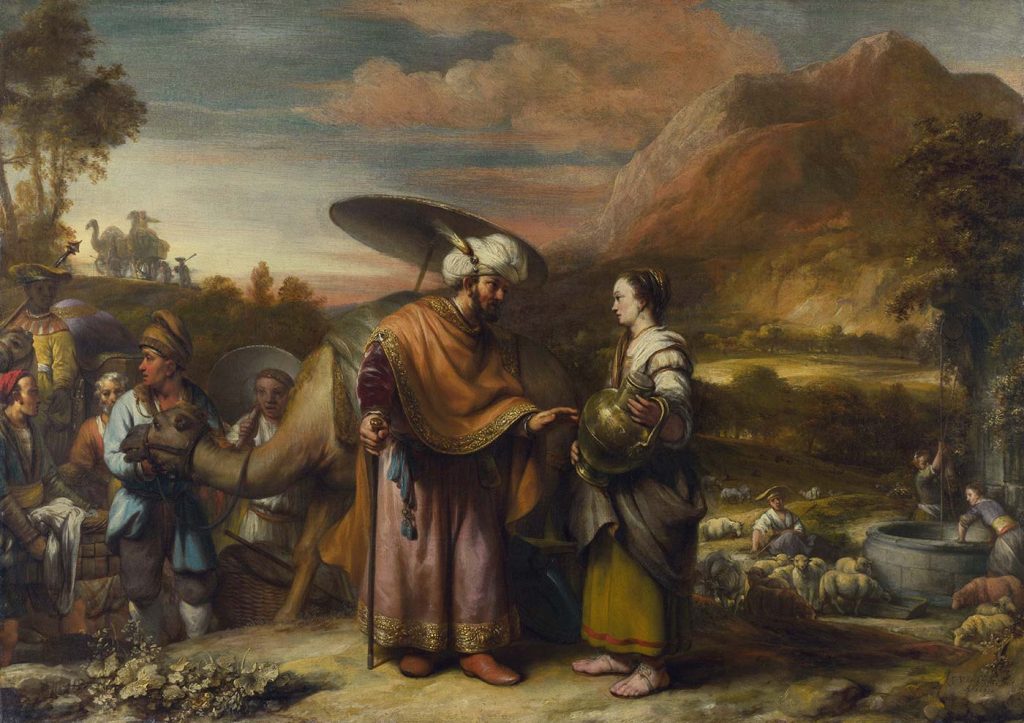
Rebekah and Eliezer at the Well by Gerbrand van den Eeckhout was created in 1661. The painting is in National Gallery London. The size of the work is 76,5 x 108 cm and is made of oil on canvas.
About the Work
Van den Eeckhout’s painting tells an Old Testament story of kindness, hospitality and trust towards travellers. In 1991, it was presented to the National Gallery by Mr Herman Shickman in gratitude to the British people who showed hospitality to his mother, a refugee from Germany in the Second World War.
In the seventeenth century, the people of the Dutch Republic paid great attention to the Old Testament, seeing a link between the Jews, who had overcome great hardship to gain freedom, and themselves, in their recently won independence from Spanish rule. Pictures portraying scenes from the Old Testament were popular, and biblical characters seen as real. This is why artists such as Rembrandt and his pupil van den Eeckhout often used people from their neighbourhood as models and painted them ‘warts and all’ in their pursuit of realism.
The figure wearing the enormous turban is Eliezer, chief servant of Abraham, the first of the Jewish patriarchs. Abraham wanted a wife for his son, Isaac, and sent Eliezer to find a bride in a neighbouring country. Eliezer prayed for help in finding her, and God told him to stop at a well to ask for water for himself and his camels. Whichever young woman offered it first would be chosen. The painting shows the moment when, without his asking, Rebekah shyly offers Eliezer a drink. Read more in National Gallery London
About the Artist
Gerbrand van den Eeckhout (19 August 1621 – 29 September 1674) was a Dutch Golden Age painter and a favourite student of Rembrandt. He was also an etcher, an amateur poet, a collector and an adviser on art.
Gerbrand was born in Amsterdam, the son of a jeweller, a Mennonite who fled after 1585 from Antwerp to the north. In 1631 his mother died. His father’s second wife was Cornelia Dedel, the daughter of a founder of the Delft chamber of the Dutch East India Company.
Arnold Houbraken records Van den Eeckhout was a pupil of Rembrandt. A fellow pupil to Ferdinand Bol, Nicolaes Maes and Govert Flinck, but regarded as inferior to them in skill and experience; he soon assumed Rembrandt’s manner with such success that his pictures were confused with those of his master. Read more in Wikipedia
Order a reproduction of this work (printed on canvas)
